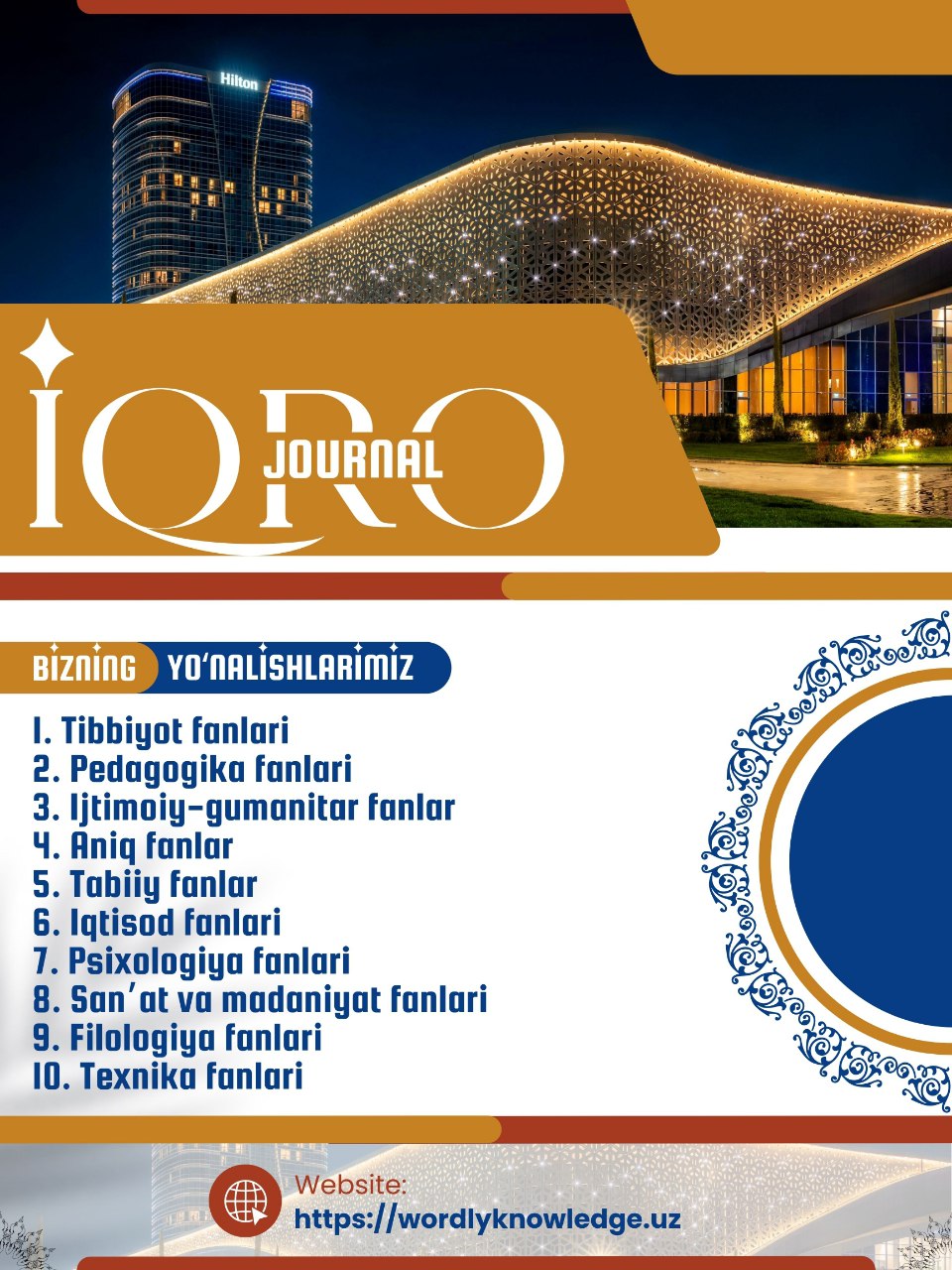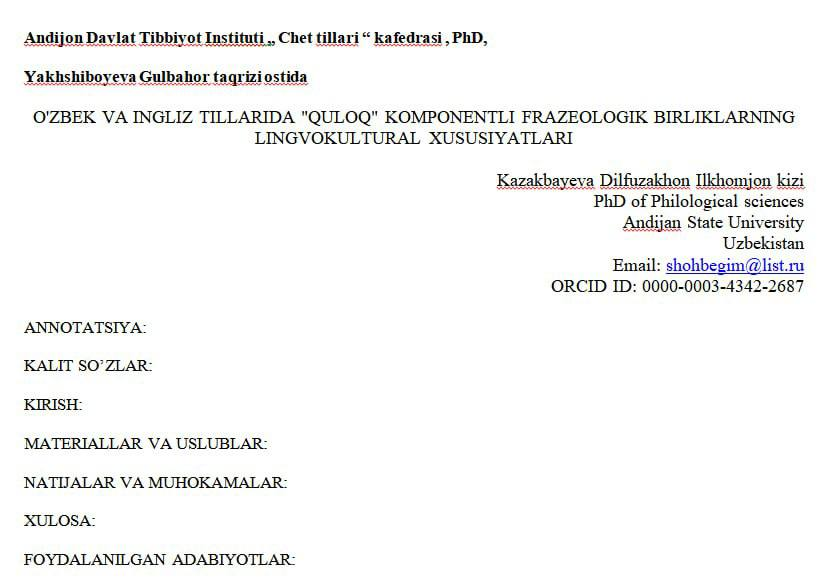USING MODERN ENGLISH TECHNOLOGIES IN FOREIGN LANGUAGE LESSONS
Keywords:
Technology, learning English, the effectiveness of using technology, English skills,communication skills,educational environment.Abstract
The thesis talks about new ways of teaching and the materials used in teaching languages. It also mentions different educational trends and methods, as well as the importance of technology in teaching English. Teaching English has changed a lot in the past, with more focus on communication and technical skills. It's important to prepare students for the global job market. However, the English curriculum hasn't changed much in a long time, which can be frustrating for students.
Educators play a vital role in leveraging modern English technologies effectively. Moreover, how teachers can harness technology to facilitate differentiated instruction, track student progress, and foster a learner-centered approach. It also discusses the importance of digital literacy and ongoing professional development for educators in utilizing these technologies optimally. The integration of modern English technologies in foreign language lessons offers exciting possibilities for language learning. Educators can harness the potential of technology to create dynamic and effective language learning environments, empowering students to develop their English language skills in a meaningful and engaging manner.
References
İŞMAN, A. (2012). Technology and technique: An educational perspective. TOJET: The Turkish Online Journal of
Educational Technology, 11(2), 207
Hennessy, S., Ruthven, K., & Brindley, S. (2005). Teacher perspectives on integrating ICT into subject teaching:
Commitment, constraints, caution, and change. Journal of Curriculum Studies, 37(2), 155 -192
Pourhossein Gilakjani, A. (2017). A review of the literature on the integration of technology into the learning and
teaching of English language skills. International Journal of English Linguistics, 7(5), 95 -106. doi:https://doi.org/10.5539/ijel.v7n5p95
Dockstader, J. (2008). Teachers of the 21st century know the what, why, and how of technology integration. Retrieved from http://the -tech.mit.edu/Chemicool/
Costley, K. C. (2014). The positive effects of technology on teaching and student learning. Arkansas Tech University.
Murphy, K., DePasquale, R., & McNamara, E. (2003). Meaningful Connections: Using Technology in Primary Classrooms. Young Children, 58(6), 12 -18. Retrieved June 17, 2018 from https://www.learntechlib.org/p/101494/.
Keser, H., Uzunboylu, H., & Ozdamli, F. (2012). The trends in technology supported collaborative learning studies in 21st century. World Journal on Educational Technology, 3(2), 103 -119.
Hennessy, S. (2005). Emerging teacher strategies for supporting. Cambridge, UK: University of Cambridge
Costley, K. C. (2014). The positive effects of technology on teaching and student learning. Arkansas Tech University
Riasati, M. J., Allahyar, N., & Tan, K. E. (2012). Technology in language education: Benefits and barriers. Journal of Education and Practice, 3(5), 25 -30. www.iiste.org › Home › Vol 3, No 5 (2012) › Riasati
Gillespie, H. (2006). Unlocking learning and teaching with ICT: Identifying and overcoming barriers. London: David Fulton. https://trove.nla.gov.au/work/20064464














